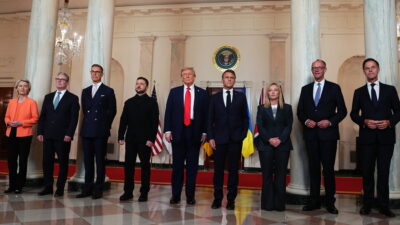Themistoklis Zanidis: China Vs USA: The militarization of space
02/08/2020
The recent successful launch of a Chinese satellite completes the Chinese global Beidou tracking system -competitive with us GPS and European Galileo- which counts up to 55 satellites. This now necessarily turns everyone’s attention to space. The competition between US-China in it has recently included the exploration of the planet Mars, as they both plan to send exploratory vessels a few days apart.
Thus, more and more analysts around the world conclude that the militarization of space is inevitable. Of course, US and China are not alone in Space because some other powers have significant presence in it. But what does this militarization of Space actually mean and how can it affect people on earth?
The competition of global powers in Space is far from new. But, firstly we will clarify what is defined as Space. The latter is the vast space in which all heavenly bodies exist and interact. Practically, the boundaries of Earth and Space are 100 kilometers above the ground. There is the geospace which includes the upper layers of the Earth’s atmosphere, i.e. the ionosphere and the magnetosphere. This area is important because it causes stability in the satellite orbits, which must be constantly corrected, as we will analyze below.
Space was the field in which the competition between the two superpowers during the Cold War expanded. Actually, U.S. President Reagan in 1983 announced to the public the U.S. Strategic Defense Initiative (SDI), better known as “Star Wars”. Its aim was making the US immune from Soviet nuclear weapons. This costly program increased the pressure on the already faltering finances of the Soviet Union, which only few years later collapsed. Since then, Space has been used mainly for scientific purposes with some limited military use mainly due to the existence of spy satellites.
However, ambitious China has been continuously growing in recent decades in all aspects. Beijing has sought to translate its economic power into political penetration in order to dominate the region of Southeast Asia. In addition, Beijing competes with the United States in terms of technology (i.e 5G networks), including the military. Indeed, China is implementing an extensive armaments program to modernize its Armed Forces in order to be able to compete with the United States in this domain which US is unquestionably dominant.
This includes Beijing’s autonomy in terms of the global geospatial satellite system, which offers China innumerable military and political capabilities. It can be used in transport, agriculture, fisheries and trade even in anticipation of impending natural disasters. The Chinese authorities offer the capabilities of this system free of charge to anyone who wishes (specifically addressed to the countries of Africa, Asia and South America in the regions where the Chinese penetration is most intense) to use them.
The competition between the two powers
For this reason, this initiative is placed in the huge investment program, Belt and Road Initiative (BRI). It is characterized as the Chinese Information Silk Road, as it facilitates the spread of Chinese influence in Space. Naturally, Beijing is becoming independent at a critical military juncture as it will have its own autonomous missile, aircraft and submarine navigation system.
The competition between the two powers in domains such as economics and technology would inevitably lead them to Space, in which the possibilities for development and experimentation are unlimited. NATO’s Secretary General’s statement on the inclusion of Space in the Alliance’s domains of action along with land, sea, air, and cyberspace are characteristic.
This practically means that the leaders of the Alliance recognize that Space is an extremely dynamic and rapidly growing sector, which is important for the defense of the Member States and the prevention of threats coming to it. The NATO Space Manifesto came a few months after the founding of the U.S. Space Command and the U.S. Space Force by President Trump, who also declared that Space would be a future field of military confrontation.
The establishment of the Space Administration will help maintain U.S. hegemony, as it may be threatened, according to the U.S. President, by the advanced capabilities of China and Russia, which eventually may threaten US national security. In addition, the United States will work with its closest intelligence allies(Five Eyes meaning Canada, Australia, New Zealand and UK), as well as with Germany, Japan and France (President Macron says his country intends to establish a Space Corps).
This statement certainly provoked reactions world widely. China has expressed its antithesis towards U.S. militarization of space, accusing Washington of continuing its arms race and blatantly violating the Space Peace Treaty. On the same wavelength, Russia accused the United States of using pretexts to continue the arms race in space. It is clear that the reactions of Washington’s main rivals do not fully reflect their intentions as they have thrown their own weight there as they potentially perceive it as the weak point of the American defense.
Since 1957
What concerns Westerner governments mostly is the Chinese and Russian military programs related to Space. Western agencies have concluded that China and Russia consider space to be a potential area for a future conflict. Therefore, they seek to develop weapons systems suitable for the space environment to strike the West when needed. Russia has already intervened in GPS tracking during NATO exercises, and has an extensive nuclear arsenal and advanced missile capabilities.
The international environment currently is unstable and characterized by a variety of security threats to which Space is now a part. The rivalries of the Great Powers in ambiguous but extremely globalized international system are intensifying with the result that all sides seek the slightest advantage. The nature of Space allows the development of technologies that are very important in peacetime and critical in the event of war.
However, the militarization of Space is in direct conflict with the United Nations’ commitment to its exclusively peaceful use. More specifically, the United Nations’ involvement with Space dates back to the beginning of the Space Age in 1957. UN General Assembly has established the Committee on the Peaceful Uses of Outer Space (COPUOS) which in 1959 became a Permanent Body with 24 members and two subcommittees, the Scientific / Technological and the Legal.
Space: Εvolution of military systems
The purpose of the Commission is to facilitate the cooperation of States on the peaceful use of Space and to organize programs under the auspices of the United Nations. In addition, it encourages research and dissemination of information on space-related issues to become the property of all mankind, while studying legal issues raised by Space exploration.
Today the Commission has 95 members -Greece joined the Commission in 1980 while all the Great Space Forces are members- making it one of the largest in the United Nations and also many International Observer Organizations including the EU and the European Space Agency (ESA). Simultaneously, the United Nations Office for Outer Space Affairs (UNOOSA) acts as the secretariat of the Commission, and is responsible for implementing the responsibilities of the Secretary General/UN under International Space Law.
In conclusion, since the dawn of the space age in 1957, the military activities in Space are of a defensive nature so that the agreement of the states for peaceful use of it is not violated at least until the recent Chinese test of anti-satellite missiles, the first in history. Simultaneously, international treaties explicitly prohibit the installation of weapon systems and military bases in Space.
To date, technology has not allowed the installation of offensive weapon systems in Space with the result that militarization has been defensive and therefore compatible with the concept of its peaceful use. However, the technological leaps and fierce competition of the Great Powers are cause for concern over whether or not this practice will continue.
The Chinese development of anti-satellite weapons that can hit satellites in geostationary orbit is a testament to the technological advancement and intentions of some Powers, making the line between peaceful use and militarization even more obscure. Furthermore, the nature of Space allows the evolution of military systems secretly so that the public finally becomes aware of it only after their deployment. For the aforementioned reasons, it is imperative that the relevant UN committee be supported by all parties to keep Space secure from the conflicts/rivalries of the Great Powers.





